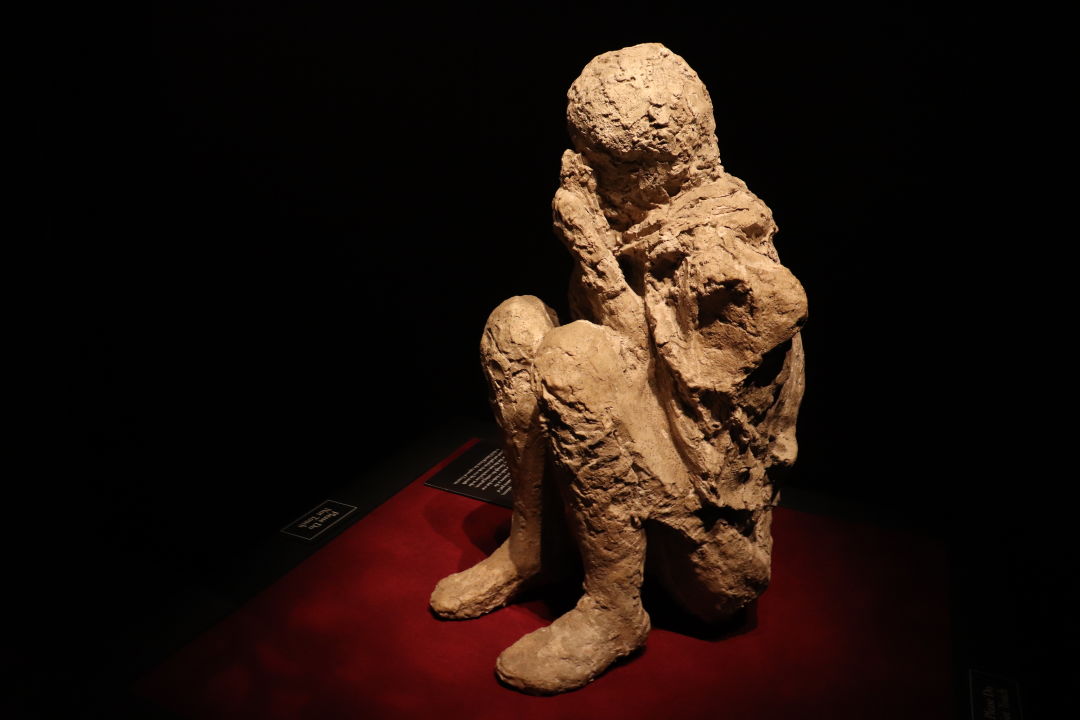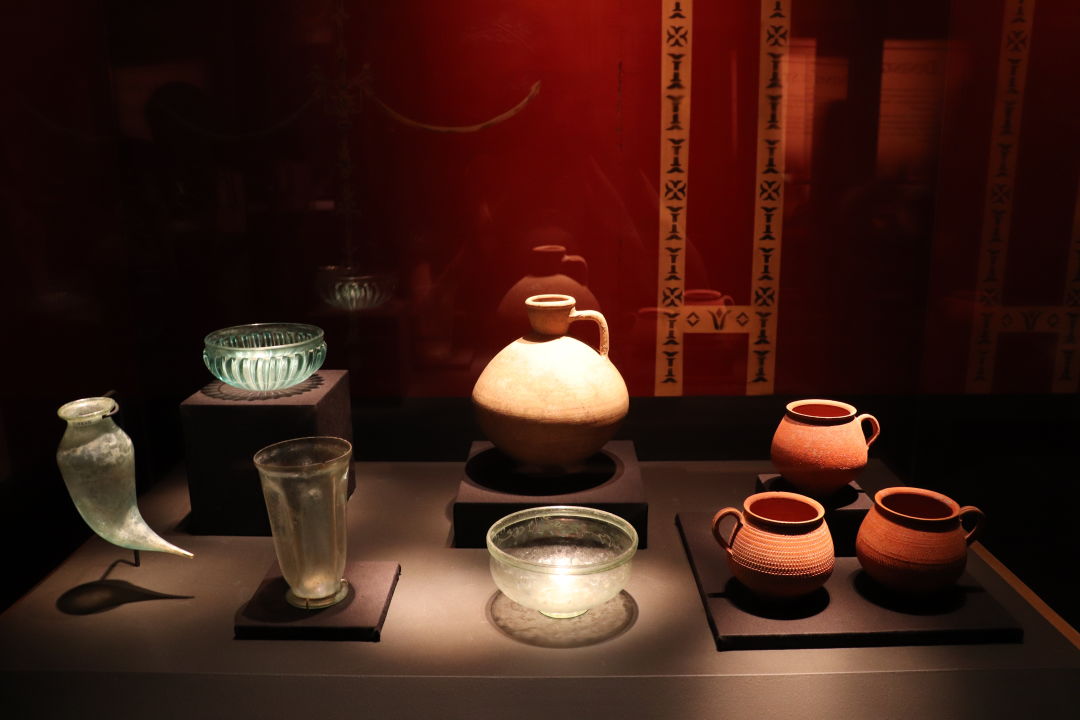HMNS Transports Visitors to Ancient Pompeii

An artifact in POMPEII: The Exhibition at the Houston Museum of Natural Science.
If the world as we know it were to end today, how would future civilizations remember Houston? What would they make of the Astrodome, the Space Center complex, the sculptures lining Buffalo Bayou and Hermann Park? What would they learn about us? What artifacts would they excavate from our neighborhoods, our houses, our bedrooms?
These are questions raised by POMPEII: The Exhibition, the Houston Museum of Natural Science’s jaw-dropping journey to Ancient Rome set to debut February 13. By combining modern multimedia records, a reproduced Roman villa, casts of human remains, and 150 artifacts—including 10 items never seen before in the United States—on loan from the Naples National Archaeological Museum in Italy, the museum transports visitors nearly 2,000 years through the past to Ancient Rome, offering them an unparalleled glimpse into the daily lives of Roman citizens.
Much of our understanding of human history comes from incomplete portraits of distant societies that, in spite of our most noble efforts, we still struggle to understand. From the Pyramids of Giza in Egypt to the Mayan Temples in Mexico, archaeological evidence often favors the elite sections of society, which possessed the means to construct sprawling edifices that could withstand the test of time. Such artifacts are instrumental to our understanding of ancient cultures, but they are still merely parts of a much larger whole.
The Ancient Roman city of Pompeii, however, is exceptional. When Mount Vesuvius erupted in 79 C.E., the city was frozen in a state of frenzied panic, blanketed beneath volcanic ash and pumice. Preserved for over a millennium until its discovery in the late 16th century, the snapshot in time of Pompeii offers a holistic picture of life as it utterly was.
“It is truly a time capsule,” Dirk Van Tuerenhout, curator of anthropology at HMNS, tells Houstonia. “What you get is a city that went dark.”

Even Ancient Romans had to cook.
The discovery of Pompeii precipitated the modern field of archaeology and substantially improved our familiarity with Ancient Roman culture. Upon the city’s excavation over 250 years ago, roads and residences were found relatively intact beyond the initial volcanic damage. Stunning frescos that would have otherwise faded or crumbled constitute some of the earliest examples of Roman painting, and intricate mosaics and pottery contribute to Pompeii’s status as a “treasure trove” for classical art. Some of the most fascinating objects, however, identify the more common, quotidian aspects of Roman life.
“There was graffiti,” Tuerenhout says. “Just as there is tagging today on walls today, there was scratching on walls in the past on an entire range of topics.” Some of these messages mirror the whimsical scrawls one might find today in a bathroom stall; Tuerenhout likens others to “early Yelp reviews,” carved comments outside the walls of restaurants.
Ongoing excavations of Pompeii continue to reveal additional surprising facets of Ancient Roman culture. Per Tuerenhout, the HMNS exhibition includes a section on “Roman fast food,” which consisted of roadside stands where city residents would drop by for a quick bite. Recently, archaeologists excavated one of these stands, which featured “beautifully preserved paintings” of a rooster and pair of ducks, presumably part of the stall’s daily fare.
“It was the McDonald’s of the day,” he jokes.
Tuerenhout, who has been with HMNS for over 20 years, hopes visitors take note of such commonalities between Pompeii and modern life. Although it existed long before today, Pompeii was filled with people who, like us, resided in a bustling city, relished in beautiful visual art, dined at fast food joints, and voiced their opinions wherever they could.
“It makes it personal,” he says. “Ancient Rome came and went, so here’s a thought: How long will we persist?”
POMPEII: The Exhibition is on display Saturday, February 13, 2021–Monday, September 6, 2021. Visitors are encouraged to purchase advance tickets online at www.hmns.org but can also buy tickets in person at the HMNS box office.




